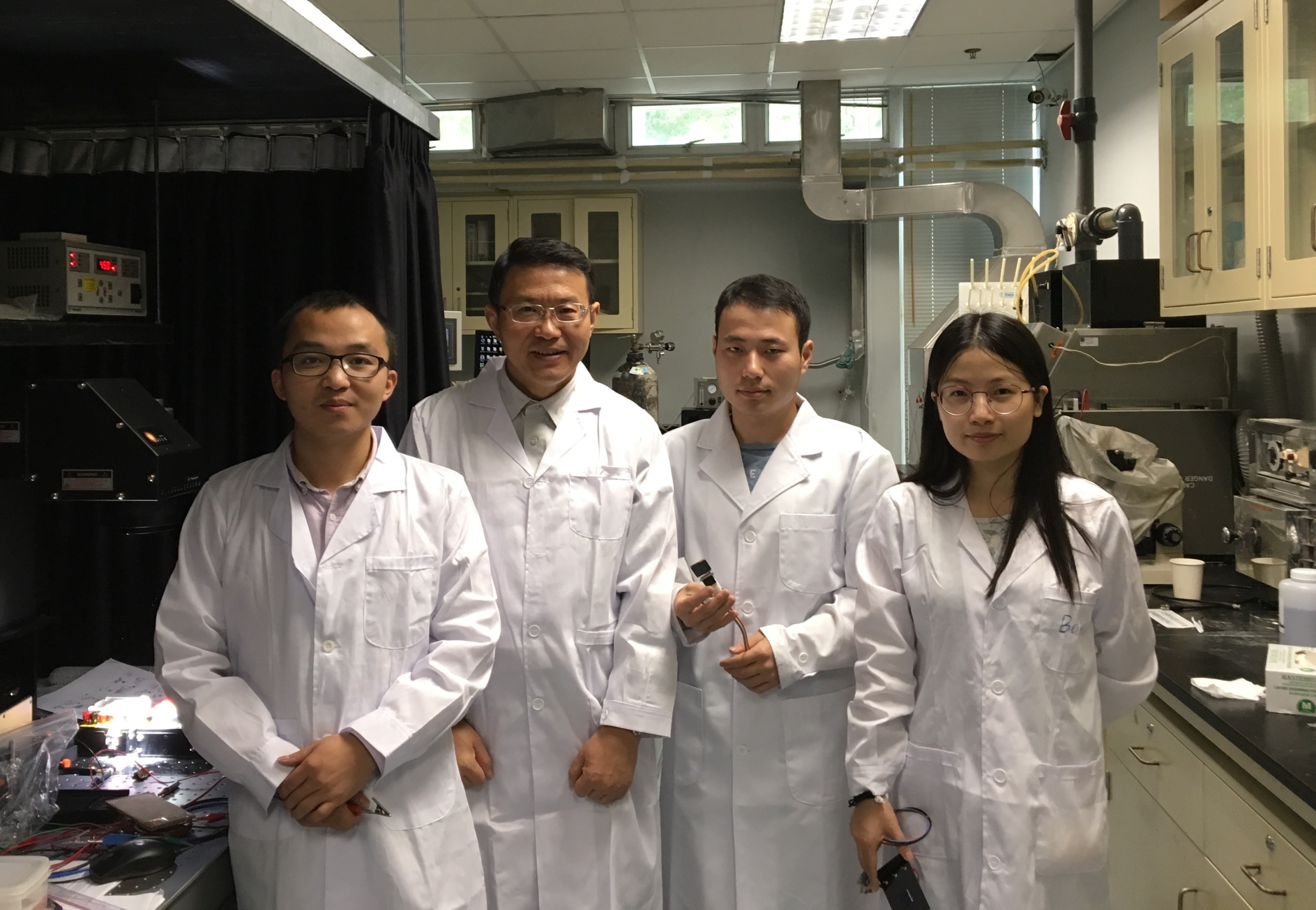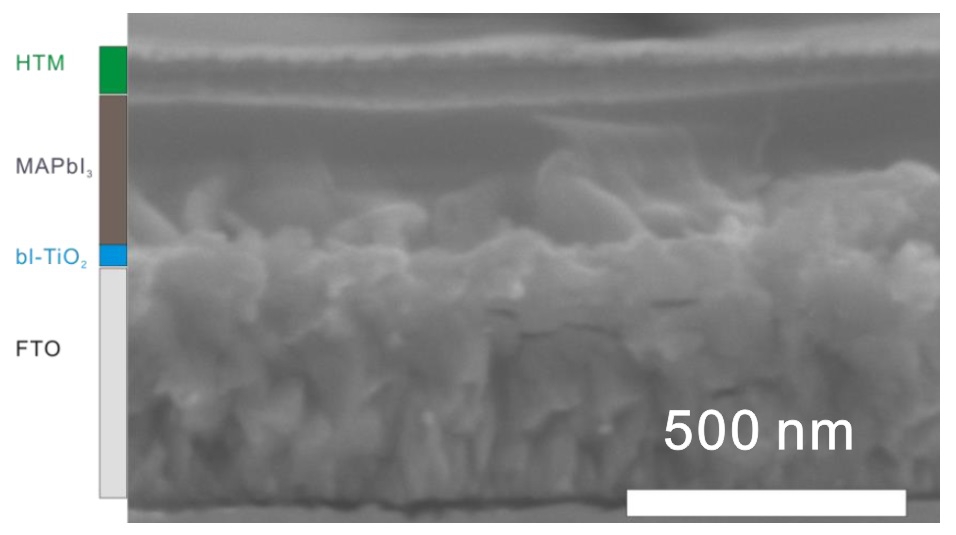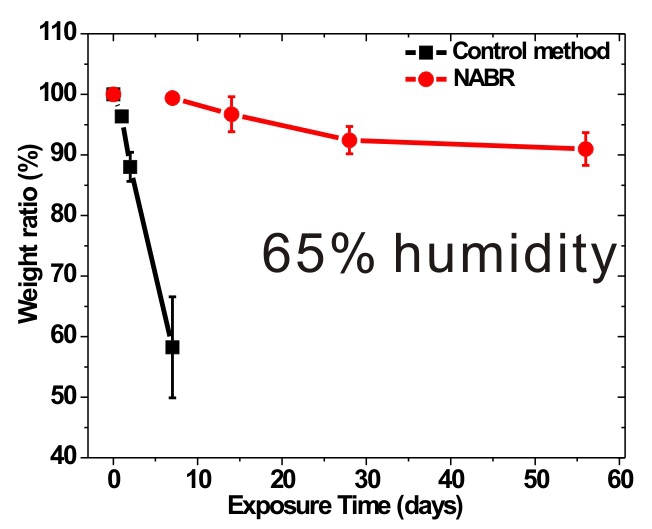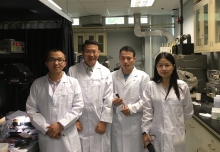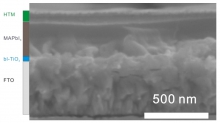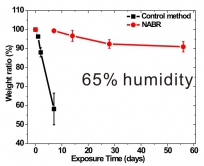CUHK
News Centre
CUHK’s Groundbreaking Enhancement of Perovskite Solar Cell Stability Facilitates its Commercialization
Perovskite solar cell (PSC) is one of the leading frontier research topics worldwide. In 2013, PSC was selected by the Science journal as one of the “Top 10 Breakthroughs of 2013”. The raw material of this kind of solar cells is a particular kind of instable perovskite, which hampered its device fabrication for commercialization. Prof. Jian-Bin Xu, Professor, Prof. Keyou Yan, Research Assistant Professor, Department of Electronic Engineering at The Chinese University of Hong Kong (CUHK) and their research team have successfully established a technique named “non-stoichiometric acid-base reaction (NABR)” to significantly improve the stability of MAPbI3 perovskite thin films through reaction route optimization in organic and inorganic hybrid perovskite. The breakthrough has been published recently in the latest issue of the renowned journal Nature Communications.
Nowadays, the global market for solar technology is dominated by the silicon type solar cells. Although its exploration technology has been ongoing for decades, its Power Conversion Efficiency (PCE) has already reached a plateau at around 25%. In addition, the fabrication of silicon solar cells caused environmental pollution due to the release of toxic gases and by-products during the high temperature melting process. On the other hand, since the first application of perovskite materials in solar cells in 2009, its global PCE record has been soaring dramatically to 22.1% in just 7 years. The fabrication of PSCs only involves low temperature solution production processes, which is more environmentally friendly. Moreover, it can be fabricated easily into scalable, flexible and ultrathin films. The cost of PSC is also more competitive than silicon solar cells, showing its promising potential in the market.
Nevertheless, the widespread commercialization of PSCs is hindered due to its material instability. Stability tests on PSCs by other academic institutions worldwide in 2013 showed approximately 20 to 50% PCE loss after 200 and 500 hours of operation. This finding showed that PSCs have to overcome the significant stability issue so as to be widely adopted in the market.
The CUHK research team, comprised Prof. Jian-Bin Xu, Prof. Keyou Yan, and their PhD students Mingzhu Long and Tiankai Zhang systematically investigated the perovskite formation, degradation and recovery and proposed the NABR based on the mechanism investigation. Being an ion crystal, perovskite is subject to instability under environments of high air humidity. The research team discovered that perovskite material prepared through their NABR methodology is stable for two months under a humidity of approximately 65%, whereas perovskites prepared by traditional methods degraded distinctly after one week. The study sheds light on the development of highly efficient PSC with low cost and high stability, which is promising to be applied in the stability enhancement work of another type of perovskite.
Professor Xu said, “Since the invention of PSC in 2009, stability is a major challenge in its community. In this study, we have significantly enhanced the material stability for perovskite. It is also promising for us to further solve the stability issues of PSC by conducting composition engineering and mechanism investigation, in combination with simple packaging technology in the future.”
Professor Yan went on to say, “This study mainly focused on mechanism investigation and thus the methodology has universality. The team is now further improving the efficiency and heat stability by applying the methodology in other perovskite materials. Substantial improvement in stability of PSC to attain commercial requirements is expected within 3 to 5 years.”
In this study, Prof. Thomas Mak Chung-Wai, Wei Lun Research Professor in the Department of Chemistry, CUHK, and his research assistant Dr. Chun-Fai Ng were involved in the characterization work of intermediate compound structure. This paper published in Nature Communications is the second article published by Hong Kong research teams about PSC in Nature Publishing Group (NPG).
About the Research Project “Smart Solar Energy Harvesting, Storage and Utilization”
The study is part of the 5-year research project “Smart Solar Energy Harvesting, Storage and Utilization” led by Prof. Ching-ping Wong, Dean of Engineering, CUHK. The project has been funded by the Theme-based Research Scheme (TRS) of the Research Grants Council (RGC) of the Hong Kong Government (HK$ 60.33 million) since 2014, with another HK$ 13.8 million from CUHK and HK$ 3 million from other partner universities. More than 30 scholars from CUHK, The Hong Kong Polytechnic University, The Hong Kong University of Science and Technology and The University of Hong Kong have been working together to enhance the efficiency of solar power and the penetration of the technology.
About Prof. Jian-Bin Xu
Professor Xu is a respected expert in nanotechnology and electronic materials. He has published over 350 technical papers, and actively taken part in a myriad of professional activities. He is a Fellow of the Hong Kong Institute of Engineers (HKIE), Senior Member of the Institute of Electrical and Electronics Engineers (IEEE), the Secretary and Council Member of the Hong Kong Materials Research Society. He is currently the Director of Materials Science and Technology Research Centre, CUHK. He is a recipient of several prestige awards including Chang Jiang Scholar Chair Professor by the Ministry of Education, China.
About Prof. Keyou Yan
Professor Yan has a multidisciplinary background in materials physics and chemistry as well as comprehensive expertise in material chemistry. He has published over 50 papers in top and authoritative journals including Journal of the American Chemistry Society (JACS), ACS Nano and Energy & Environmental Science and others, with more than 2,000 citations. Particularly, his two papers related to perovskite solar cells in 2015 were selected by Web of Science as highly-cited papers. Professor Yan is a Member of the American Chemistry Society (ACS), and also a regular reviewer of submissions to JACS and Nature Communication etc.
(From left) Prof. Keyou Yan, Prof. Jian-Bin Xu, PhD students Tiankai Zhang and Mingzhu Long of the Department of Electronic Engineering, CUHK.


